Welcome to our liability guide, where we will help you understand the functionality and usage of the bearings! In this article, we will shift our focus to the large variety of bearings, their purpose, how they stabilize the machine, how they manage the loads, and how they assist in reducing friction. Furthermore, we will examine various kinds of bearings, such as ball bearings, roller bearings, and plain bearings, with a focus on their applications, differences, and advantages. In addition, we will offer tips on choosing the right bearing depending on the situation at hand, i.e., different applications, different types of loads, and different bearing types are matched up. We will also discuss advanced custom bearings that include tapered, spherical, and needle roller bearings, along with some revolutionary bearing designs, fluid bearings, and flexure bearings. Be prepared to have your minds expanded as you witness technology’s growth and the intricacy with which it is woven into society. Time for us to get started.
What is the Primary Purpose of Bearings?
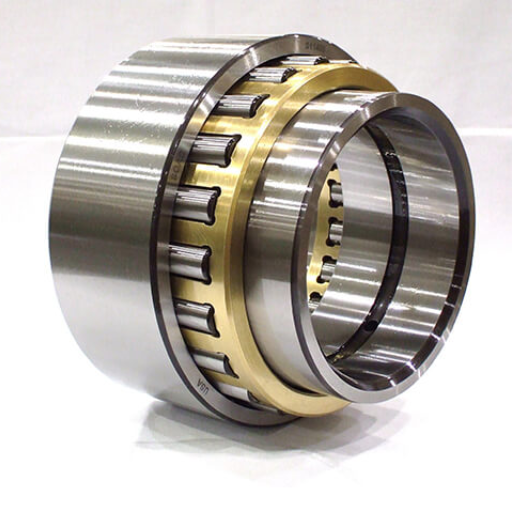
the main function of bearings is to allow rotational or linear movement of parts in a piece of equipment. Bearings act as a critical connection between moving components, allowing for a decrease in friction and, thus, reduced wear and tear. They provide support and positioning of parts, thereby enabling correct positioning and level of the machinery components. Be it the wheels of a car, the shafts of a drilling machine, or the arm of a manipulator, bearings assist in rotational or linear motions of these components effectively and accurately.
How Do Bearings Support Machinery?
To begin with, let me elaborate on how bearings assist machines. According to experts, bearings are one of the basic components that make numerous mechanical systems work. These components are designed to provide rigid support and lubricate the contact between two or several moving components to lessen friction and wear. In performing this function, bearings maintain the appropriate orientation and position of elements, which helps to increase not only the functionality but also the lifetime of the equipment. Be it on the wheels of a vehicle, rotating shafts of industrial machinery, or in a robotic arm’s joint, bearings are crucial for providing dependable and accurate movement. Furthermore, their ability to take up both radial and axial loads enables them to facilitate significant amounts of weight while allowing smooth motion, either ROTARY or LINEAR. Bearings are the reason machines work for longer periods of time, work faster, and are more effective, all thanks to their added ease of use in a wide range of PHYSICAL WORKING conditions.
What Role Do Bearings Play in Load Management?
bearings represent a very important aspect in the management of loads. Bearings are designed to help in transferring and holding both radial and axial loads, thus allowing for controlled and consistent motion of machines. Bearings are sources of friction modification between moving components, hence they prevent excessive us e of parts enhancing performance and service life of equipment. Heavy industrial equipment during production processes or surgical instruments precision in medicine, there are bearings to facilitate and make everything smooth; thus, they are the crucial elements in load management.
How Do Bearings Reduce Friction?
let us focus on how bearings are designed to reduce friction. Moving parts in any mechanism or machine bear a lot of friction that needs to be incorporated, which is why bearings are manufactured in a very sophisticated manner. They achieve this through the following mechanisms:
- Separation of Surfaces: Generally, bearing rolling elements like balls or rollers aid in the separation of contacting surfaces; when a load is applied, the bearings come into direct contact with each other. This contact is normally minimal because of the rolling elements, and therefore, the resultant frictional forces are very low.
- Smooth Rotation: Rolling elements in bearings assist in rotation in a smooth and controlled manner without sliding using the rolling motion. Such motion allows the surface’s way in contact to be loaded in a balanced manner, thus resulting in less friction.
- Lubrication: The rolling elements of the bearing and the raceways are separated by a thin film, with grease or oil as a common lubricant. Such lubrication significantly diminishes the level of friction and heat produced, thus allowing better efficiency and longer bearing life.
With the help of these mechanisms, bearings reduce friction and its adverse effects, such as wear and tear, heat generation, loss of energy, etc. In turn, this leads to more efficiency, greater reliability, and better general functioning of machines and equipment.
Exploring Different Types of Bearings
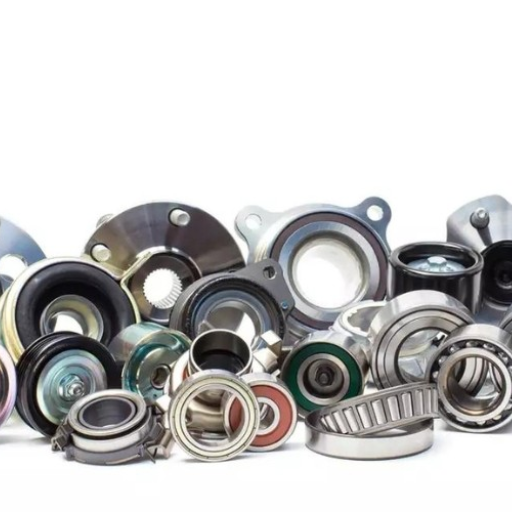
Industry professionals specialize in a given field, and in their content, they share their views regarding tools such as bearings or tools for machinery and equipment. This article seeks to synthesize three important questions or tools that an equipment can use. It seeks to answer its application, benefits, and usage. This shouldn’t be too difficult, considering the complexity and significance that these tools play in machinery. People seeking to gain more knowledge regarding motors, tools, and machinery would greatly appreciate this. The bearings themselves play a great role in functioning and optimizing motors. Therefore, researching these components and their importance is crucial. The better the understanding, the better the decision-making! Wouldn’t you agree?
What are Ball Bearings and Their Uses?
we should take a closer look at the flaws and intricacies of the use of ball bearings. Ball bearings, which consist of an inner and outer ring, a set of steel balls and a cage to keep the balls apart, are precision instruments manufactured to serve a specific purpose. From facilitating the rotational motion of shafts and spindles in machinery and equipment to minimizing friction, these components possess immense work. Ball bearings find applications in numerous industries, for instance, automotive products, which include wheel hubs and reasoning, as well as industrial equipment such as pumps, motors, and conveyors. Additionally, power tools, household items, and even skateboards make use of them as well. The integration of ball bearings into mechanical systems provides a revolutionary solution whereby performance is improved, energy use is lowered, and the system’s duration is prolonged while also being compact, efficient, and versatile.
How Do Roller Bearings Differ?
As an industry expert, you might ask yourself what the difference is between a roller bearing and other bearings. Roller bearings are quite unique. They use cylindrical, tapered, or sphere-shaped rolling elements instead of balls as their purpose. , This is why roller bearings can support greater loads as well as provide more robust stability features amongst different applications. Load-wise, roller bearings have bigger areas of contact than ball bearings and can be more efficient in supporting all types of loads: radial, axial, or both. On the other hand, ball bearings and roller bearings serve different purposes, so how to choose between them? For instance, the weight one needs to support, and the required speed would be some key influencing parameters in such considerations. Once you are aware of the distinctions between these different bearing types, you are better equipped to make the best choice for your needs.
Understanding Plain Bearings: Applications and Benefits
Let’s start off by exploring the areas of application and advantages of plain bearings, and if you’re interested, let’s help these industry professionals straight away. One can also refer to plain bearings as sleeve bearings or bushings, which are fairly basic components but are quite used in a variety of industries. The reason for their extensive usage is 46 low cost, low maintenance and ease of assembly, consisting of a cylindrical inner and outer surface enabling relative motion of two components with less friction and wear.
As for the advantages of plain bearings, they have a number, including:
- Low Friction: When it comes to the absence of rolling elements, plain bearings enable smooth and quiet operation with minimum friction losses.
- High Load Capacity: They are capable of handling heavy loads; therefore, they are best for heavy-duty work.
- Wide Temperature Range: Plain bearings have a wide applicability range as they are able to work efficiently at different temperatures.
- Cost-Effective: Plain bearings are usually cheaper than the other types of bearings, which makes them usable in many applications.
The right bearing type can be determined by load-carrying capacity, speed, environment, and expected maintenance. For ideal use and long lifespan, it is important to pair the right bearing type to the application. Furthermore, distinguishing between radial and axial loads is handy in identifying the right bearing for certain loading conditions.
Besides plain bearings, there are also specialized forms like tapered roller bearings, spherical roller bearings, and needle roller bearings, which possess benefits for certain applications. For example, commonly found in cars and other industrial machinery, a tapered roller bearing has the ability to handle high axial and radial loads. Spherical roller bearings are well-suited for more demanding applications where there is a permissive amount of load or if there is a degree of misalignment present. Needle roller bearing features a compact structure with high loading capabilities.
Finally, fluid bearings and flexure bearings are also specialized forms of bearings that bring additional benefits in certain applications. By using a thin layer of liquid around moving components, fluid bearings enable the achievement of high-accuracy movement with low friction. Flexure bearings can provide angle/ motion adjustment with minimal movement slack, which is perfect for cases where high accuracy is needed.
It is critical to comprehend the uses and advantages of different entities in order to properly know how to choose the best entity for the various requirements.
How to Select the Right Bearing for Your Needs
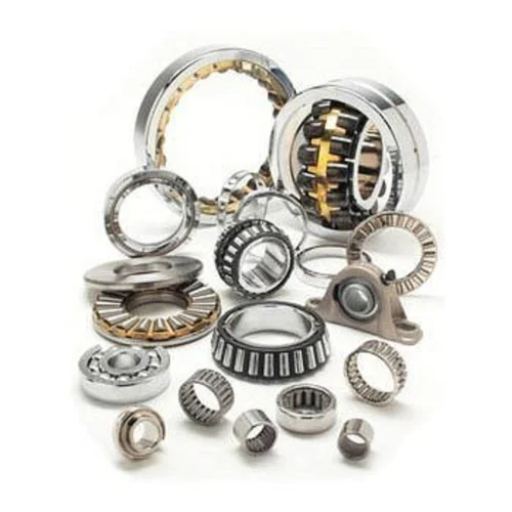
it is important to take into account several factors to make the right selection of the bearing so that it delivers the best possible service and performance. Here are some of the basic factors that you should keep in mind whilst making your selection of the right bearing:
- Load requirements: Identify the type and amount of load the bearing will be subjected to, including radial and axial loads, which will assist in the selection of the bearing type and design.
- Speed and precision: What is the required speed of rotation and precision for the application? Different bearing types are capable of sustaining different speeds and precisions.
- Environmental conditions: What temperature, humidity, and contaminants will the bearing be operating in? Some bearing materials and configurations are more suited to perform in certain environments than others.
- Maintenance and serviceability: What is the maintenance schedule, and how easy is it to reach the lube points, inspection points, and substitutions? Some bearings are designed to have longer periods between servicing or have less work per cycle.
- Cost and availability: What are the bearing type purchase cost and ongoing expenses, stock availability, and the cost of spare parts, including maintenance cost?
To be honest, selecting the appropriate type of bearing with regard to your application is not as easy as turning a knob. However, as proven in many bearing projects, careful attention towards these elements allows one to decide upon the best fitting bearing, thus leading toward everlasting reliability and satisfaction across numerous industries.
What Factors Should Be Considered?
In this case, there are a few considerations that need to be taken into account while choosing the correct type of bearing for the application. These would be:
- Load requirements: Identify the kind and the amount of load applied to the bearing, for example, radial or axial loads or a combination.
- Speed and temperature: While considering the factor speed of operation of your application, it is also necessary to specify the temperature range for the application. This is because different bearing types have different speed and temperature ratings.
- Environment: Determine the environment in which the bearing will work like whether it will be exposed to moisture, dust, or chemicals. Some bearings are made to distort and perform in very rough environmental conditions, whereas some are not.
- Lubrication: Ascertain the bearing lubrication requirements. There are bearings which are periodically lubricated, there are also bearings which are self lubricated or maintenance free.
- Cost and availability: Also consider the cost and availability of the bearing type in question, directly its initial purchasing cost, possible servicing costs, and the difficulty in getting replacement parts.
Keeping those aspects in mind, you can comfortably choose the best bearing that will perform and be efficient in specific requirements across different sectors.
How to Match Bearing Type with Application?
Bearings are critical components in a wide range of rotating machinery, and every bearing type is designed to be operational in a particular application. Hence, an almost in-depth focus on the components that match the bearing to the application: load typologies, axial and radial specialized bearings, and advanced bearing technology is required. Let us see how to match the bearing type with the application in the shortest possible fashion:
- Understanding Load Types: Depending on the application, radial loads, which are square with respect to the shaft, or axial loads, which are parallel with the shaft, can be observed. By determining even the shaft’s predominant load type, it is possible to choose self-aligning bearings that are already specified for such loads.
- Specialized Bearings: These can include tapered roller bearings, spherical roller bearings, and needle roller bearings. Tapered roller bearings are preferred for interaction with a combination of radial and axial loads; spherical roller bearings take care of large radial loads and some misalignment. Limited space applications with reasonably high radial loads would make use of needle roller bearings.
- Applications of Tapered Roller Bearings: These are found in automotive and some industrial and heavy machinery applications that require components that support and aid in the precision of the combined radial and axial loads.
- When to Use Spherical Roller Bearings?: Spherical roller bearings are often used in heavy-duty applications, such as in the mining, steel, and construction industries. These bearings can handle high amounts of radial loads and shock loads as well as misalignment, which means they can cope with more complex working situations.
- Benefits of Needle Roller Bearings: Compact and possessing an impressive load-carrying capacity, needle roller bearings are ideal for machinery that has only limited space while also requiring a significant amount of radial load, making them useful for automotive transmissions, power tools, and agricultural machinery alike.
- Innovative Bearing Technologies: When thinking of it, for particular usage, it is plausible to use flexure bearings as well as fluid bearings. Utilizing a thin fluid film, fluid bearings are capable of sustaining a significant load while having a minimal amount of friction, giving it maximum precision. Flexure bearings, on the other hand, use elastic deformation as the means of motion and are employed in precision devices.
Looking to select the perfect bearing type for your specific application, even when working with various industries? Examine load types, cutting-edge technologies, and specialized bearings without breaking a sweat and guarantee smooth and high-quality operation.
Understanding Load Types: Radial and Axial Loads
To begin, we need to clarify a very important aspect of this industry, which relates to the principal types of loads that bearings can encounter. The very first type of load is known as radial load. Radial load is defined as any force that is applied perpendicular to the axis of a bearing and which rotates the bearing about its own axis. These loads are often experienced in instances where the bearing is placed onto a rotating part or is used to bear radial movements. Axial loads, on the other hand, are defined as any force that acts parallel to the axis of the bearing and which applies either a thrust or outward pushing force to the bearing. Working with axial loads is typical in scenarios where certain forces are to be applied or resisted in a certain direction. Varying these load types allows engineers and designers to choose the right bearing that would offer the best competitive advantage and durability for different types of industrial applications.
Specialized Bearings: Tapered, Spherical, and Needle Roller Bearings
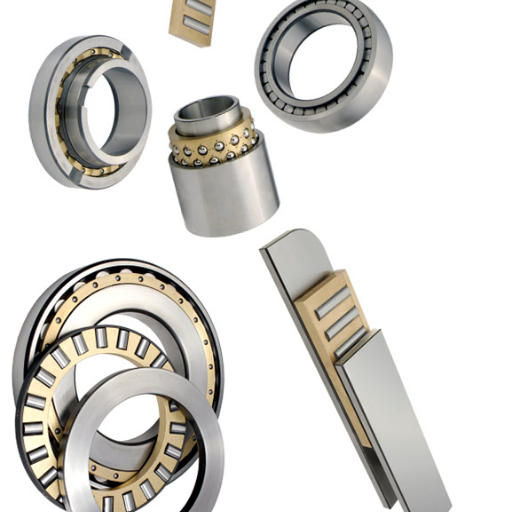
let us know more about the specific bearings that were quoted earlier: tapered, spherical, and needle roller bearings. These types of bearings provide various advantages in different applications.
Applications of Tapered Roller Bearings
Tapered roller bearings are frequently applied in places like automotive wheel bearings, gearboxes, and heavy machinery due to their capability of enduring heavy axial and radial load. They are designed in a manner that permits the roller and races to bear efficiently radial and axial forces, thus overcoming the limitations of single load support applications.
When to Use Spherical Roller Bearings?
Spherical roller bearings are made to resist large radial loads and one lateral or axial load in applications that have some shaft misalignment or shaft deflection. They are used in mining, construction, and paper mills, where robust performance and reliability are of utmost importance.
Benefits of Needle Roller Bearings
Needle roller bearings are distinguished by cylindrical-shaped rollers with a high length-to-diameter ratio. These bearings are suitable for use in situations with a limited amount of radial space and with great load-bearing capacity in automotive transmissions, power tools, textile machinery, etc. Their small volume and high-speed capabilities make them ideal for precision applications.
By knowing the applications and the advantages of these specialized bearings, engineers and designers are informed about the selection of the necessary bearings for their tasks. A wide variety of specialized bearings assures maximum efficiency and durability in different industrial missions.
Innovative Bearing Technologies: Fluid and Flexure Bearings
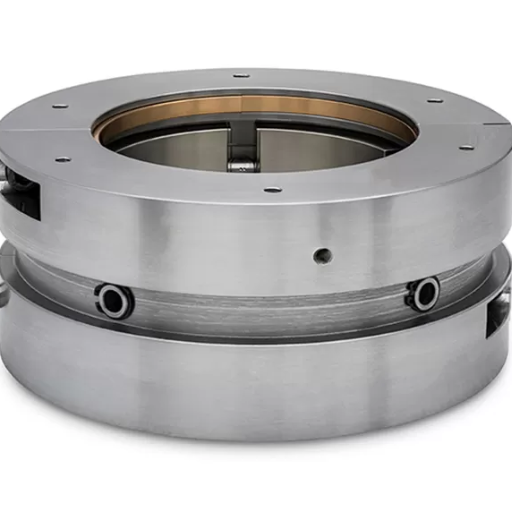
I want to bring to your attention two innovative bearing technologies: Fluid bearings and flexible bearings. These abilities are novel advancements in bearing technologies that have their strengths in some specific scope of application and certainly change the perspective we have towards precision devices and industrial machinery.
Innovative Bearing Technologies: Fluid and Flexure Bearings
Fluid Bearings: Fluid bearings make use of a lubricating medium, usually either oil or air, which is interposed between the parts in relative motion, thus avoiding metal-to-metal contact between the bearing faces and hence reducing friction, wear, and heat. Fluid bearings are perfect for high-speed applications that have minimal friction and require significant control over the movement. They are widely used within the aerospace, automotive, and high-performance computing industries.
Flexure Bearings: Commonly referred to as flexure bearings, flexure hinges, or compliant mechanisms, these devices utilize the structural deformability and elasticity of materials to achieve support with controlled motion. Some of the benefits of these bearings are high precision with zero backlashes and frictional losses. They are used in precision instruments like optical systems, micro-positioning stages, and other scientific instruments, where precision and repeatitude of movement are the requirements.
Innovation in the design and use of bearings, considering fluid bearings and flexure bearings, allows designers to make the best out of precision devices by increasing the performance, reliability, and life of the device without compromising the functional ability of the mechanical components.
We will discuss the working principles, advantages, and applications of fluid and flexure bearings in detail in the following sections, and we shall have a complete insight into fluid and flexure bearings technologies.
Understanding Fluid Bearings
it’s vital to comprehend fluid bearings if you seek to enhance the operation of precision devices. Fluid bearings rely on a fluid film between the rotating shaft and the surfaces of the bearing, which, in essence, construction performs lubricating functions. This mechanism of lubrication provides a number of advantages, such as high precision, no backlash, and frictionless working; with the help of the material’s rigidity and elasticity, fluid bearings guide controlled motion for the purposes of control and stochastic prediction. This is achieved through the use of incredible bearings in precision devices like optical systems, micro-positioning stages, scientific instruments, etc., where accuracy and reliability are the key. Through fluid bearings principles, benefits, working models, and devices specific to them, mechanical engineers can best realize the capabilities of advanced bearing techniques and modify their designs in order to reach new performance levels.
The Role of Flexure Bearings in Precision Devices
you might also be curious about the purpose of flexure bearings in precision devices. Flexure bearings are essential components that ensure the performance and reliability of precision devices. These modern-day bearings take advantage of the elasticity of materials to ensure that motion in a certain application is accurate and controlled. The incorporation of a flexure design into existing systems can exchange rolling or sliding elements, resulting in low friction, high stiffness, and high repeatability. Flexure bearings offer such features as higher accuracy levels, wear-free operation, and better operational stability. These characteristics make them very important in many types of precision devices, including optical systems, micro-positioning stages, and numerous scientific devices. Thanks to the advantage of using flexure bearings, the precision and performance of the designed devices can be increased, which will provide maximum satisfaction to customers.
Reference
- The Best Type of Bearing for Your Application: A Selection Guide
- A Guide to Industrial Bearing Types
- Bearing Application – an overview
Frequently Asked Questions (FAQs)
Q: What are bearings, and what function do they serve?
A: Bearings are machine elements used to reduce friction between moving parts. Their primary function is to support rotating components and maintain the alignment of shafts, while allowing for smooth motion and handling loads effectively.
Q: What are the common types of bearings and their applications?
A: There are many different types of bearings, including ball bearings, cylindrical roller bearings, deep groove ball bearings, and thrust bearings. Each type is designed for specific applications, such as reducing friction in machinery, supporting thrust loads, or accommodating radial and axial loads.
Q: Where are bearings typically used?
A: Bearings are widely used in various types of machinery, including automotive, aerospace, industrial equipment, and household appliances. They are essential components in applications requiring rotational or linear movement.
Q: How do rolling element bearings work?
A: Rolling element bearings, such as ball and roller bearings, use rolling elements placed between two rings to reduce friction and support loads. This design helps in distributing loads evenly and providing smooth motion, thereby enhancing the efficiency of machinery.
Q: What are the advantages of using cylindrical roller bearings?
A: Cylindrical roller bearings are designed to handle high radial loads and provide excellent performance in applications requiring high-speed rotation. They are commonly used in industrial machinery due to their durability and load-carrying capacity.
Q: Can you explain the applications of deep groove ball bearings?
A: Deep groove ball bearings are versatile and used in a wide range of applications due to their ability to support both radial and axial loads. They are commonly found in electric motors, household appliances, and automotive components.
Q: What are thrust bearings, and where are they used?
A: Thrust bearings are designed to support axial loads or thrust loads. They are typically used in applications where components are subjected to axial force, such as in automotive transmissions and marine propulsion systems.
Q: What is the significance of the bearing axis in bearing performance?
A: The bearing axis is crucial as it determines the alignment and orientation of the bearing within the machinery. Proper alignment ensures optimal performance by minimizing friction and wear, thereby extending the lifespan of the bearing.
Q: How do ball and roller bearings differ in their applications?
A: Ball bearings are generally used for applications requiring lower load capacities and higher speeds, while roller bearings are used for heavier loads and slower speeds. The choice between the two depends on the specific requirements of the machinery.
Q: What are some special types of bearings for specific applications?
A: Special types of bearings, such as excel bearings and jewel bearings, are designed for unique conditions. Exsev bearings are used in clean environments, while jewel bearings are used in precision instruments due to their accuracy and low friction.
